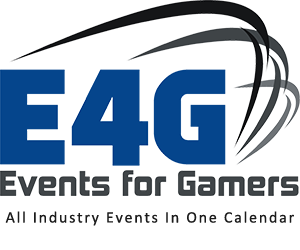
Some of you, if you’re old enough or know some old 80’s or 90’s TV memes, might be familiar with a certain half-sugar coated, half crunchy wheat cereal ad. These old ads would show serious-looking adults eating the cereal, and they’d say, “The adult in me likes the wheat side”. Then they’d say, “But the kid in me likes the frosted side” and the joyful-looking kid is sitting there in those adult clothes.
That describes the recently held 2014 San Francisco Android Developer Conference, AnDevCon, pretty well, too, representing the serious nuts and bolts of Android development in the classrooms and tutorials.
Arguably, overall the content I observed being presented was the most granular and focused on Android technical development I’ve seen to date from any event, from. Conversely, the expo hall represented the end user-friendlier products and services targeted more for business people, and even consumers, implementing services and products for their companies.
We’re going to look at a few of the highlights, with a wink and a nod toward the “sugary side” of the event.

Highlights:
Intel, as the Diamond Sponsor of the event, definitely seemed to get their money‘s worth. Besides a front and center expo booth; a keynote; the main party topped off with demos and giveaways after the first day of the expo; they also had two “Andy” Android-styled mascots were walking around the lobby and expo area, in search of willing participants for photo opportunities.
Intel’s keynote by Jeff McVeigh, the GM of Performance Client and Visual Computing in Intel’s Developer Products Division, addressed their tool sets, logically enough, for Android developers. Intel’s footprint is broad and deep in the Android market, but one of their main thrusts is their NDK application tools for native Android apps, while another is their XDK, which enables hybrid, web and native app development across multiple platforms. Even though AnDevCon is about Android, it’s tough to ignore what’s described by Intel as 2.5 billion non-Android devices as part of one’s market strategy.

McVeigh also invested slides into underscoring Intel’s deep presence in the Android market, mentioning that they are the top merchant supplier of tablet processors, represented across 100 tablet and phone processors globally. Intel, however, continues to work mightily in their shift in focus from desktop computing to the rapidly growing IoT, wearables and mobile markets.
Qualcomm also has had a thriving ecosystem to talk about at their AnDevCon keynote later in the day, one with an influential footprint in mobile gaming ecosystems too, thanks to their Snapdragon processors seen in many Android gaming-friendly platforms.
Leon Farasati, director of PM for Qualcomm Technologies, as one of the movers and shakers behind the Snapdragon mobile and embedded chips, focused on the Snapdragon chipset impact and future with Android. With an audible gasp from the audience, Ferasati predicted the existence and creation of 25 billion connected things — gaming devices, wearables, mobile devices and more in just over 5 years from now. By 2018, he further predicted over 200 million wearable devices would be shipped. These emerging wearable platforms, frequently borrowing from, and integrated with, mobile platforms, will utilize technologies that play to the strengths of embedded computing.

Of course, Qualcomm is mapping out a plan where their embedded solutions play a part in the strategy, but it could put their chipsets in a competing role versus Intel. Quite likely the hardware fallout out of this competition will benefit the gaming community through more aggressive R&D that will bring even razzle-dazzle to a mobile screen near you.
Beyond the keynote ballroom, on the expo floor, it would be remiss not to talk about phones if any were available to talk about. And there were at Sony’s booth, including the Xperia Z3 and Z3V (made for Verizon) smartphones. While these are spiffy-looking and reasonably powerful phones at first inspection, gamers may take a shine to the PlayStation 4 Remote Play feature, that allows PS4 games to be streamed via network to the phone. Networking streaming between devices is a “thing” for many mobile device manufacturers, as NVIDIA has opened the door with their SHIELD line of mobile hardware as well.

Mantis Vision brought cardboard-style 3D goggles as the icebreaker. But, the main event for this company aiming to build an ecosystem of 3D scanning hardware and software was something tangible to start with — the Aquila 8″ tablet, powered by the 801 Snapdragon and their proprietary MV4D core 3D engine. The key differentiator above and beyond the hardware specs is the 13 megapixel camera, which maps out the image capture points into a cloud to capture depth for 3D imaging. What that could mean is that more realistic and personalized 3D figures can be captured, such as for avatars and game models.
Developers were given a chance to take a look at the prototype hardware, but launch of the final version of the product will not be rolling out until 2015.
On the audio side, one of the more interesting companies on the floor, was High Resolution Technologies, an audio accessories and products company, was primarily showing off its Nano-series dSp. Introduced to the product by Michael Hobson, the company’s CEO, he showed the size of the prototype version of the USB plug-in device, which was barely larger than a quarter.

The Nano dSp is targeted for mobile devices for audio, video and gaming, designed to expand quality and staging and accuracy. I test drove the device with music from a classics playlist. A little A/B testing with the un-enhanced versus enhanced audio revealed a noticeable difference in quality, but without testing it with the dynamic, often thumping, bass of a game, topped off with location-specific sound effects, it would be hard to say how well it would enhance game audio. However, for audiophiles amongst the gaming fans out there, the Nano dSp is likely worth a test drive.
Silicon Image is a multimedia connectivity solutions company Events for Gamers has run into in the past several months. Michael Bergen, the company’s Mobile Gaming Evangelist, was helping to host an in-booth Riptide GP 2 gaming tournament as a branding exercise to demonstrate how Wireless HD and MHL technologies can enable wireless streaming between devices without latency. In the controlled environment of AnDevCon, the technology worked as advertised. Aside from company’s integrating their solutions into mobile products, like the Galaxy Note 4, more newsy news can surely be expected from this innovative company in the next few months.

Rounding up a few of the interesting companies presenting their solutions at AnDevCon is Thales. Thales may not be a household name to some, but they are involved in an incredibly wide array of technologies. One of them happens to be in flight entertainment hardware, in-flight on-demand content systems. Like so many companies who have built a hardware platform — and really, what’s more mobile than a platform designed for flight? — Thales has created an SDK and started to build an app developer network One of their targets, according to Balaji Govindan, one of the company’s product managers, are gaming app developers. If any developers apps are approved and certified, these apps just might have the chance to be licensed by airlines and offered on their fleet of aircraft.
Summary:
While AnDevCon is clearly a conference designed around the needs of developers, designers and coders who are elbows deep into crafting Android apps, the expo and keynote talks help to reveal the shiny, gleaming exterior of what they create, and where their apps end up as a platform destination.
Stay tuned to the next stop for AnDevCon, which will be in Boston on July 29th to the 31st. Events for Gamers will be sure to share more details as they are made available!


